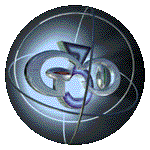
CEC 360: 3D Graphics I
Session 08
In this class we cover Procedural Shaders, Environment Simulation part II, and Lighting Part One.
Topics Covered:
•Procedural Shaders
•Techniques for Environment Simulation
•Camera Options—including zoom factor, soft filter and memory segments.
•Lighting Situations: 2 Point Studio Lights, 3 Point Studio Lights, and Use of Color with Lights
•Negative or Black Lighting
•Light Intensity Falloff
•Area Lights—which gives high quality shadows
•Linear Lights which simulates tube lighting(like a florescent light)
Homework: This week we have two choices:
Choice One:
Model, Texture, and Render a Main Screen for a User Interface.
Examples are:
•Websites
•DVD Menu
•Interactive Portfolio
•Use realistic Textures. Make the Interface have a "theme" incorporated into the design.
You will render this at at least 800x600 with Antialiasing turned on.
The folder should be named with your last name and ID # and contain:
• An Objects folder containing your Interface.lwo object
• A Scenes folder containing your Interface.lws scene
• An Images folder containing images used by your objects in the scene
OR:
Choice Two:
Homework: Model, Texture, and Render a Storefront sign using techniques covered in class.
Examples are:
•Neon Sign—many restaurants, stores, gyms and other businesses have a neon storefront sign.
•Movie Theatre or Opera House...again use of Neon is a good choice. Old Movie Theatres are good choices, too.
•Not all signs actually have the neon exposed—sometimes its hidden inside the lettering.
•If you do decide to show the Neon, use rail extrude to do the letters. If you have separate letters, then you will need to do separate rail extrusions.
•You can design your scenes with either daylight or a nightime setting—which will work well for a neon sign.
•Show not only the sign, but also the building its attached to, and maybe other nieghboring buildings.
•Use realistic Textures. Make the scene 100% believable.
•Photograph textures of real buildings(even a disposable camera will work) and make notes on what materials are used on real signs and buildings. Photographing your textures is optional.
You will render this at at least 800x600 with Antialiasing turned on.
Interface Examples:
http://www.3dluvr.com/plecxus/inter.html
Tutorial Links:
http://www.rogue3d.co.uk/lwtute.htm
Basic Inspire Tutorials:
If you have trouble and need answers quickly, here are
a couple links to FAQs(frequently asked questions) for Lightwave/Inspire:
http://www.wmix.net/%7Edefiant/lightwave/lwfaq7.txt
http://sunflower.singnet.com.sg/~teddytan/faq.htm